39 kcal on food labels
Food labels - NHS Most pre-packed foods have a nutrition label on the back or side of the packaging. These labels include information on energy in kilojoules (kJ) and kilocalories (kcal), usually referred to as calories. They also include information on fat, saturates (saturated fat), carbohydrate, sugars, protein and salt. Understanding food labels | nidirect Nutrition labels on the front of packaging. All the big supermarkets and many food manufacturers also display nutritional information on the front of pre-packed food. This is very useful when you want to compare different food products at a glance. Front of pack labels usually give a quick guide to: energy (kilo joules (kj)/ calories (kcal ...
PDF NUTRITION LABELLING INFORMATION - Food Standards Agency 100g/ml of food. • Energy must be displayed as kJ/kcal. • Information must be displayed in this order in tabular format (if space on the label does not allow for tabular format then linear format is permitted). • of which sugarsIf the product contains no added salt a statement indicating 'naturally occurring

Kcal on food labels
Are kcal the same as Calories? - Cronometer Follow. The Calories used on food labels are the same as kcals (kilocalories). 1 Calorie = 1 kcal. Calories on the New Nutrition Facts Label | FDA One package of food may contain more than one serving, so, if you eat two servings you would be getting two times the calories shown on the label. For example, if you ate one serving of the food... How to Understand and Use the Nutrition Facts Label | FDA That is two times the calories and nutrients shown in the sample label, so you would need to double the nutrient and calorie amounts, as well as the %DVs, to see what you are getting in two...
Kcal on food labels. Nutrition labelling | Food Standards Agency Mandatory information. When providing nutrition information, you are required to declare: energy value. amounts of fat, saturates, carbohydrate, sugars, protein and salt. The content of the mandatory nutrition declaration can be supplemented with an indication of the amounts of one or more of the following: monounsaturates. This Is How to Read a Nutrition Facts Label on the Keto Diet This act mandated that, with a few exceptions, all packaged foods needed nutrition labels — thus creating the black-and-white labels we see on packaged foods today. The nutrients that required labeling included: Calories Calories from fat Total fat Saturated fat Cholesterol Sodium Total Carbohydrate Dietary fiber Sugars Protein Vitamin A Vitamin C Difference Between Kcal and Cal - Ask Any Difference The nutritional values of the food items are generally recorded and then mentioned in the labels on the packet. They symbolise the energy content of that food item. One kilocalorie is equal to one thousand calories. This means, to convert a kilocalorie into a calorie, you just need to multiply the numerical value of the kilocalorie by 1000. Kcal vs. Calories: Differences and How to Convert - Healthline Calories may also be expressed as kilojoules (kJ), with one calorie or kcal equaling 4.18 kJ. How are these terms used? Regulations require that food and beverage manufacturers display a nutrition...
How Many Calories Does One KCAL Equal? | livestrong You can find the calorie amount on the food's nutrition label. This information will help you gauge whether you're consuming too many calories per day. NHS points out that the more vigorously you do physical activity, the more calories you'll lose. What's more, if you're trying to lose weight, you'll need to use more energy than what you consume. How to Calculate Kilocalories | livestrong A kilocalorie (kcal) is the same as one large calorie, which is equal to 1,000 small calories. But small calories are uncommon in everyday use — large calories, or kilocalories, are what you're used to seeing on food labels and in nutrition and exercise recommendations. The Science Behind Calories and Nutrition Facts Labels The calorie number we see on food labels refers to a kilocalorie (kcal), which is also known as a large calorie or a food calorie. A kilocalorie is 1 000 calories. One kilocalorie is the amount of energy it takes to heat one kilogram of water one degree Celsius at sea level. For foods, the calorie count is a measure of how much energy that food ... Food Labels | Nutrition.gov What's New with the Nutrition Facts Label. HHS, Food and Drug Administration. The U.S. Food and Drug Administration (FDA) has updated the Nutrition Facts label on packaged foods and beverages with a fresh design that will make it easier for you to make informed food choices that contribute to lifelong healthy eating habits. What's in a Name?
Kcal vs. Calories: Differences and Converting - Greatist Energy in food can also be measured in kilojoules (kJ). One calorie (kcal) equals 4.18 kJ or 4,184 joules (J). If you're looking to convert calories to kJ, multiply the number of calories by 4.18.... This is why calorie content is always listed in 'kcals' So that's where the 'k' comes in - it stands for 'kilocalories'. For every 1 'kcal' measure, you can assume you're actually counting 1,000 scientific calories, which sounds pretty scary if you... How To Read Food and Beverage Labels | National Institute on Aging At the top of the Nutrition Facts label, you will find the total number of servings in the container and the food or beverage's serving size. The serving size on the label is based on the amount of food that people may typically eat at one time and is not a recommendation of how much to eat. Read more about serving and portion sizes. Food labels - do we need calories and kilojoules? Incidentally, it's kcal and not kCal. It seems logical to label food with kJ and kcal to help the public make the transition to kJ only. Prior to decimalisation in 1971, prices were shown in the new and old system for at least a year and the old £sd gradually disappeared after the changes had been introduced. This change was helped through ...
How Do They Calculate Calories on Food Labels? 5 grams of fat (5 x 9 = 45 calories) 22 grams of carbohydrate (22 x 4 = 88 calories) 2 grams of protein (2 x 4 = 8) ...should contain approximately 140 calories. It's important to recognize that 4-9-4 is an average, and not an exact amount.
Calorie labelling in the out of home sector: implementation guidance display the energy content of the food in kilocalories (kcal) ... on a label identifying the food, next to, or in close proximity to each item of food which may be chosen, and displayed in a ...
Food Label Accuracy of Common Snack Foods - PMC As specified by the Code of Federal Regulations ( 10 ), calories on food labels represent metabolizable energy, i.e. total (gross) calories minus calories that are excreted in stool and urine. However, doubts regarding the accuracy of energy content labeling of packaged foods have been expressed.
How Do Food Manufacturers Calculate the Calorie Count of Packaged Foods? One kcal equals 4.184 kj. So the Calorie on a food package is 1,000 times larger than the calorie used in chemistry and physics. The original method used to determine the number of kcals in a ...
Looking at labels - British Nutrition Foundation Using these food labels when shopping can help you make healthier choices, for example, by choosing foods and drinks that are: lower in saturated fat lower in sugar lower in salt lower in calories Back-of-pack labelling The majority of pre-packed products (by law) provide a nutrition label on the back of pack.
Cat Food Labels COMPLETE GUIDE - Caticles There are 4 crucial steps to reading cat food labels properly. Product name rules Ingredients list Guaranteed analysis Nutritional adequacy statement And a bonus: the manufacturer. Product name rules The product name rule tells us how much of the named ingredient is in the product. This could range from 0% minimum requirement to 95%.
Why are the calories in a nutrition label displayed in Kcal and ... - Quora What does kCal mean on a nutrition label? To be technically correct, the unit should be written as "kcal" or "Cal." The uppercase C is used in place of "kc." Therefore, "kCal" is incorrect, as it means kilo-kilocalories. That said, people are sloppy in the use of the term "calories." You see every variation of wrong usage. Jan Steinman
How to Read Carbohydrates on Food Labels - GlycoLeap That would be around 15 to 30 g of carbohydrates. Snack = 15 - 30 g of carbohydrate. For the main meals (breakfast, lunch, dinner), 2 to 3 servings of carbs would be enough. That is about 30-45 g of carbohydrates. 3 servings of carbohydrates are about the size of 1 fist size of rice.
Understanding calories - NHS To find the energy content in kilojoules, multiply the calorie figure by 4.2. The label will usually tell you how many calories are contained in 100 grams or 100 millilitres of the food or drink, so you can compare the calorie content of different products. Many labels will also state the number of calories in 1 portion of the food.
How to Understand and Use the Nutrition Facts Label | FDA That is two times the calories and nutrients shown in the sample label, so you would need to double the nutrient and calorie amounts, as well as the %DVs, to see what you are getting in two...
Calories on the New Nutrition Facts Label | FDA One package of food may contain more than one serving, so, if you eat two servings you would be getting two times the calories shown on the label. For example, if you ate one serving of the food...
Are kcal the same as Calories? - Cronometer Follow. The Calories used on food labels are the same as kcals (kilocalories). 1 Calorie = 1 kcal.


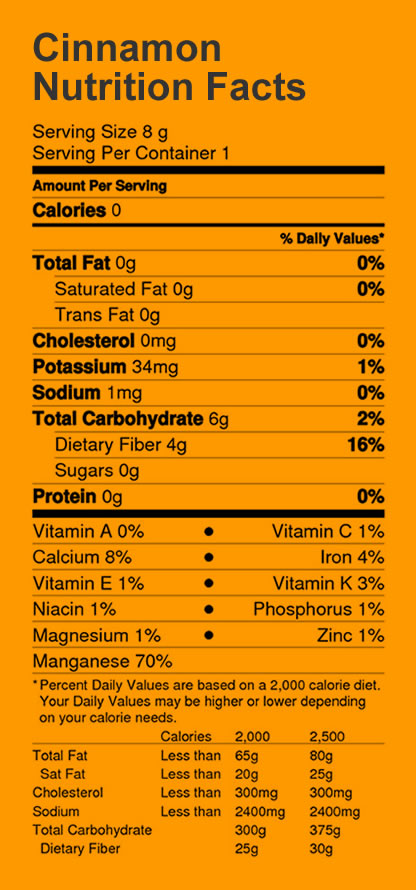


![復 [Basic] Calories in Round Lettuce](https://freecaloriechart.uk/wp-content/uploads/2018/06/caloriesinroundlettuce.jpg)

![[Basic] Calories in Salmon Fillet](https://freecaloriechart.uk/wp-content/uploads/2018/05/caloriesinsalmonfillet.jpg)

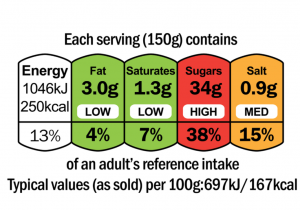

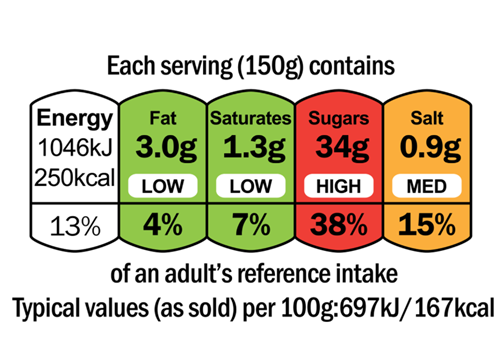
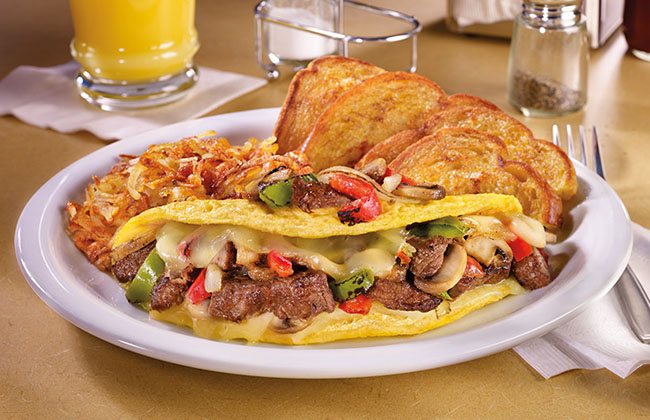
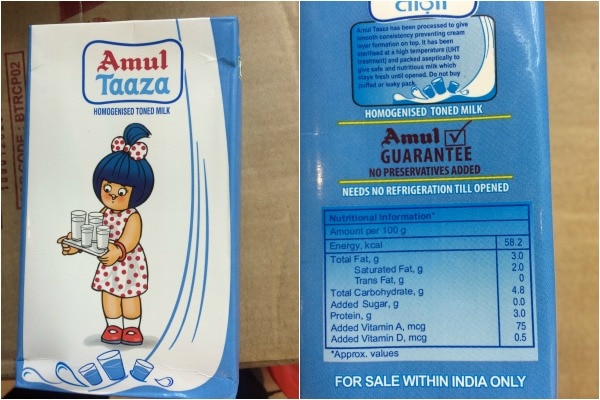


Post a Comment for "39 kcal on food labels"